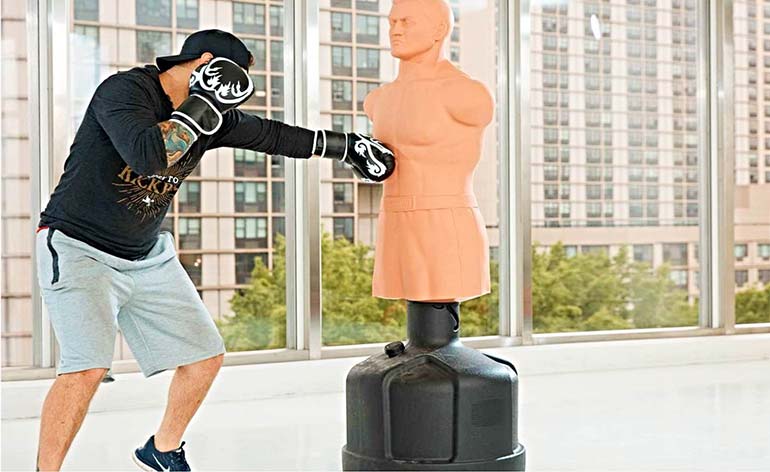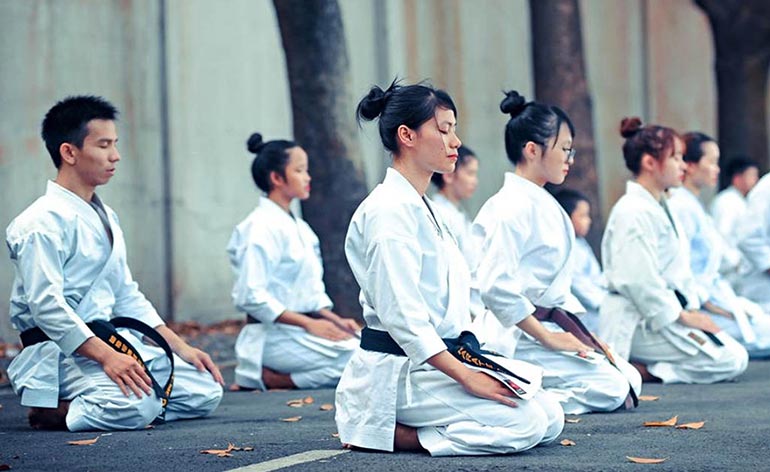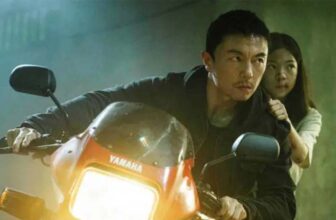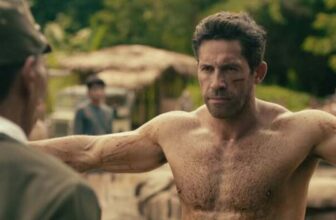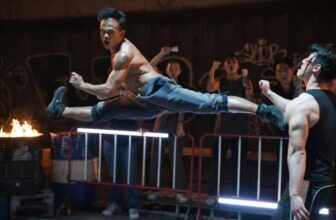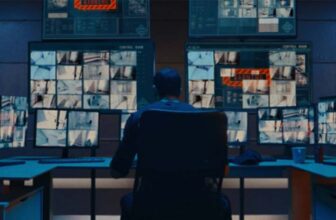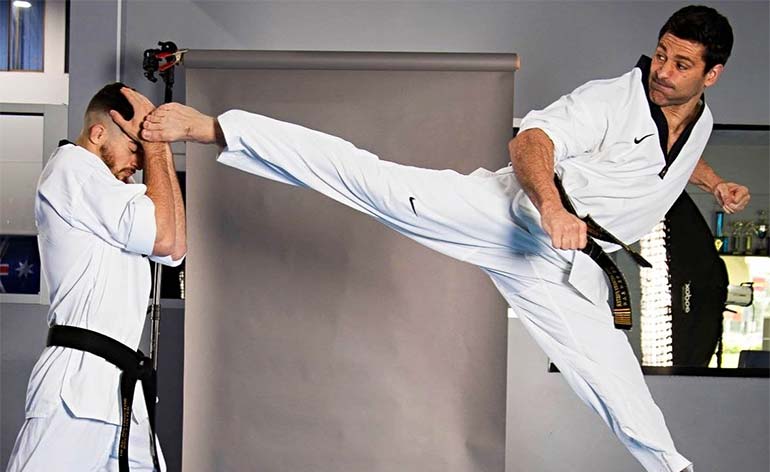
If you were a crash-test dummy used in the test lab of the National Geographic martial arts documentary series “Fight Science”, odds are exceptionally good that you were particularly nervous whenever Bren Foster was preparing to throw a kick.
As a frequent presence on “Fight Science”, Bren’s exceptional skills as a martial artist are the stuff of legend. Bren has also been seen in numerous action films and TV shows like “The Last Ship”, “Deep Blue Sea 3”, “Maximum Conviction”, and “A Force of Execution”, and Bren is now preparing to push martial arts moviemaking to the next level with his upcoming directorial debut “Life After Fighting”, which is now playing in select theaters and is available on VOD platforms!
In “Life After Fighting”, Bren portrays Alex Faulker, a retired fighter and martial arts school owner, who must call upon all of his fighting skills when a group of his students are kidnapped by child traffickers.
Martial arts fans have every reason to fervently anticipate “Life After Fighting”, the movie’s trailer showcasing wildly fast, powerful, and energetic fight scenes with flashy Taekwondo kicks, grappling techniques, and weapons combat that position “Life After Fighting” to easily be among the best martial arts films of 2024, and one with plenty of emotional depth and character drama to bring its story to life.
Today, Bren sits down with Kung Fu Kingdom to talk about the making of “Life After Fighting” and his goals with the film, his life in martial arts both in real life and cinematically, and other projects he has coming up in the future!


Hi Bren, it’s great to connect with you, and welcome to Kung Fu Kingdom!
Have you taken a look at our site Kung Fu Kingdom before?
Yes, I was already familiar with Kung Fu Kingdom before, and thank you for including “Life After Fighting” on your Top 15 Most Anticipated Martial Arts Movies of 2024 list. I showed that to my kids and everyone at the school, and that was really great to see!
Thank you Bren, that’s great to hear! Well, before we dive in today, our mission is to encourage 100 million people around the world to get into martial arts for all the positive benefits that it brings to individuals, physically, mentally and socially – what do you think about KFK’s goal to inspire people around the world to learn martial arts?
Oh, I think it’s great! Sometimes, martial arts is one of the most undervalued and underrated things a person can adopt into their life, especially with children.
The amount of benefits and improvements I’ve seen in children, and in adults, over the years, you can’t put a price on it, Brad. A child learning self-defense and everything that comes with martial arts, the benefits are immeasurable, from physical ability to strength to coordination to confidence, everything changes with martial arts.


In a lot of Asian countries, like in Korea, for instance, Taekwondo is like a subject, and Judo and Karate in Japan, it’s instilled so deeply into their cultures.
There are a lot of people that do value martial arts, but sometimes in the West, I feel like they don’t have a true appreciation for the value that martial arts brings to a person’s life. And me as an instructor and in everything else I do, that’s one of my goals is to try to spread martial arts and to try to influence as many people as I can through the martial arts.
For instance, the other day, I was in the shopping center, and a police officer came up to me and said “Hi Bren, I just want to thank you for the amount of times your training has helped me when I’ve been working as a young police officer, your training has helped me stay calm, physically it’s helped me when I’ve needed to restrain people, and I can’t thank you enough. Everything you’ve taught me has helped me so much in my line of work”.
I’m grateful that the teaching that I was able to pass onto him has influenced his life and it’s helped him, and to me, that was the biggest compliment anyone could’ve given me, and in terms of my legacy in the martial arts, that’s something that I want to leave behind. So, for the impact I was able to have on his life through the martial arts, I was super, super grateful.


Awesome! Okay, let’s jump right and start with where were you born and raised?
Good old Australia
What is your height and weight?
5 feet 11 inches, and 91kg (200 lbs.)
Martial Arts
So, when did you first become interested in martial arts, Bren, and what different disciplines have you studied?
Yeah, my martial arts journey has been pretty – and I don’t mean this in an egotistical way – has been awesome!
I started with Karate when I was six years old, and I did Karate for a couple of years, then from there, I moved to Hapkido. I did Hapkido for quite some time up until the age of about 13, and I earned my first dan black belt in Hapkido, which was a grueling grading, it was a very traditional, hardcore school with a Korean instructor, Master Kim.
He’d have us punch the bags with no gloves until our knuckles were bleeding, and then on the other side of that, one of the branches that was under Master Kim at the time had a heavy American kickboxing influence from people like Bill “Superfoot” Wallace and Benny “The Jet” Urquidez. And, before I’d even stepped onto the Taekwondo mat, I’d had five kickboxing matches as a child.


Oh really?
Yeah, and they were pretty brutal, they were done in a tournament style, and in my event, I had to fight five two-minute rounds. So, as an 11 year-old boy, I had fought 11 rounds of kickboxing, and I remember waking up the next day and my head was quite sore!
I think I was about 13 when I started Hwarangdo and Taekwondo under another Korean instructor who was teaching both of them, and I got my black belts in Hwarangdo and Taekwondo in the years that followed.
I guess I gravitated more towards Taekwondo at that time because I was just really fascinated and was taken by the kicks, and when I was 16, I’d gone overseas and represented Australia in an international invitational world championship event, Taekwondo.
Then when I came back, I actually broke my leg and I got a metal plate and nine screws in it, so I couldn’t really kick for a while, so I got heavily into boxing while my leg was healing. Then, slowly from there, I started doing a bit of Thai boxing. Going back a bit, I actually started in Muay Thai when I was 14 along with my Taekwondo.


After getting over my broken leg, all of it started coming together, the boxing, the kickboxing, the Taekwondo, very shortly around that time, I started some wrestling, and to fast-forward a few years, in 1999, I met Anthony Perosh who had just gotten his purple belt in Brazilian Jiu-Jitsu, and no one knew what that was at the time. So, I started doing Brazilian Jiu Jitsu with Anthony, and it was in a little shed in the outback of Australia and there were about five of us training there.
I think one of my biggest changes in my martial arts training happened when I met one of my now best friends, Ron Balicki. I got into a movie called “A Force of Execution”, and I was looking to expand my Filipino martial arts – which, backtracking a little bit, I had also trained with Ray Floreau, who is a Filipino martial arts instructor – and when I met Ron, he’s probably a prime example of a martial arts encyclopedia walking around as a human!
The guy just knows so much, and not only does he know so much, he’s bloody good at it. So I started training with Ron to expand my knife fighting knowledge, and ended up getting him into the movie and then doing a knife fight with him. Training with Ron in my time in L.A., which was from about 2012 to 2020, I learned a lot of Filipino martial arts, Jeet Kune Do, Silat, the Shooto style of training for MMA, and Ron was a great source of knowledge for me.
The training never stops, the growth never stops, the knowledge is still out there, there’s a lot of stuff that I don’t know that I’m still searching to find, and I believe that through constant training, there’s a lot of self-discovery in the martial arts.


100 percent! So, who would you say are your top 3 biggest martial arts influences?
Well, one of the reasons I went from Hapkido to kickboxing to Taekwondo was because of the movie “Best of the Best”. I watched that movie and especially with Phillip Rhee and Simon Rhee, I was just “Wow!”, and the training in Korea.
That then became a dream of mine, which actually came true, when I finished my last year of high school, I was in Korea training, and that movie and Phillip and Simon were a huge influence in me pushing toward Taekwondo training. Ron has been a big influence in my martial arts training and helping me see things from a different perspective.
In terms of other influences, obviously, my Brazilian Jiu Jitsu coach, Anthony Parosh. I had a great bunch of instructors at Hollywood Brazilian Jiu Jitsu, so I want to give a shout out to them, like Sean Patrick Flannery, and also, I had a bit of a rough time and went through a few surgeries, and a couple of instructors like Professor Rodrigo and Professor Naito helped get me back, and my friends Tim and Eddie also helped me build myself back up during that time and come back to training.
Obviously, in the early days, Bruce Lee was a massive influence, and I really think Jackie Chan is very underrated in terms of being a martial artist. If you look at the fights he was doing with Sammo Hung and Benny Urquidez, those fights, they were pretty full on.


They were taking shots, and I remember speaking with Richard Norton, and he told me “Yeah, we just put some cotton wool in our teeth so our teeth wouldn’t smash together”, and they would really smack each other with an uppercut.
If you really look at Jackie Chan’s work, he takes some hits, and he gives some hits. The blocks are hard, the forearms are banging, the shins are banging, the body shots are landing, and some of the head kicks are landing, and I think Jackie Chan was very underrated as a martial artist, so I do like to go back and look at a lot of his stuff, and that’s been a little bit of an influence in “Life After Fighting”, too.
Action Movie Career
Well, actually moving into your career in front of the camera now, you’re also well known for your appearances on the National Geographic Channel’s “Fight Science” martial arts documentary series? How did you get involved in “Fight Science” and what can you share about the making of the documentary series?
Yeah, “Fight Science” was great. The way it started for me was there was a documentary going on the Discovery Channel, and James Lew, who is another mate of mine, came out to Australia with Mickey Stern and John Brankas and they were looking to do a documentary on Xtreme Martial Arts.
Back then, there weren’t many people doing it. I was one of the first guys who was doing a lot of the acrobatic stuff and doing somersaults and breaking six boards in the air before landing.
One of the stunt coordinators pulled me in, and I had a bit of a martial arts audition, let’s say, and they did this test shoot for the Discovery Channel. But then, the Discovery Channel – this is what I’m told – wanted to shoot it in Los Angeles, and I went over, had a small part in the documentary called “XMA”, and that was the relationship that started with the “Fight Science” people.
The “Fight Science” guys had looked around the world of martial arts for top guys in the different disciplines. I think I was about 27, and I’m there rubbing shoulders with people like Dan Inosanto, Rickson Gracie, Sensei Toshihiro Obata, so there were some legends there, and that crash test dummy was solid steel on the inside!
I don’t think people realize how heavy it was, and the punching bag, that was like stone. You can see me wailing on it, but I don’t know what was in it, but it was jam-packed with sand and it was like rock, it was so heavy!


There were a few little things that I don’t think everyone got from “Fight Science”.
There was a kicking contest where I did my spinning back kick, which scored really high, and then Melchor Menor, who is an amazing Muay Thai fighter – I think he was world champion at the time – he did a knee, and they said “Oh, the knee was the most effective” and everyone was led to believe that the knee was the most powerful technique, but they have to really, really listen, because the knee was measured with chest compression, where the three of us were kicking before, it was measured in pounds per force, so they were two completely different measurements.
There was also a kicking contest in one of the follow-up shows measuring power and speed, and Lateef Crowder is fantastic.
He’s probably one of, if not, the best Capoeira guy in the world, but when they measured the kicks, they said “Bren, congratulations, you have the fastest and most powerful kick.” But then what they did, it was almost like they reverse-engineered something, and it was like “Okay, if both of the kicks were going 100 mph, Lateef’s would’ve been the most effective”, but the kicks were both going as fast as they could go and as powerful as they could go, so the algorithm was a bit superfluous. And when I questioned it, they told me “Well, Bren, you can’t win everything!” (both laugh)
Overall, it was pretty arduous, it was a tough shoot, especially the feature-length “Fight Science” documentary. Doing everything over and over and over again, I dropped a little bit of weight, so I’m not complaining about that.
It was great to rub shoulders with legends like Rickson Gracie, Dan Inosanto, and Sensei Obata, every single person there was fantastic. So, I’ve got nothing but great things to say about “Fight Science”, it was a once in a lifetime opportunity to put your skills to the test against science, beside me just wanting to clarify a few things on some of the tests!



Well, speaking of the tests on “Fight Science”, would you say were some of your favorite individual tests and episodes of the documentary series?
I think doing the tiger claw strike against the soccer ball, although it looked like a soccer ball on the outside, was a solid steel ball on the inside, so when you hit it, you were hitting a really heavy, solid steel measuring cylinder. The ballistic gel stuff was also pretty hardcore, especially with the throat grab and that kind of stuff, because that was hard and I actually hurt my hand doing that!
The improvised weapons test with the magazine and turning that into a thrusting weapon was also an interesting test, and I did also like the speed and power tests with the kicks.
Kicking is probably my favorite thing to do, so putting the speed and power of my kicks to the test was probably what I enjoyed the most. I don’t know if I could put it down to one thing, because across the board, the tests were all really fun, but I think my favorite was the speed and power tests on the kicking.
Yes, the kicking tests were great, and that poor crash test dummy sure took a lot of punishment! Moving ahead now to your upcoming movie “Life After Fighting”, what can you share about how the film came about?
Well, I’d lived in the States for quite some time, and after being on the show “The Last Ship”, there was a certain type of movie and certain types of projects I had in mind that I really wanted to do. I still felt like I hadn’t given the martial art movie world my best yet, and it was something I really wanted to do, but a lot of the scripts that came to me seemed to lack any real heart.
The stories weren’t great, the characters weren’t great, and that’s something that’s also very dear to me, because I studied acting at university and I’m also an acting teacher, but people seem to think that because you do martial arts, you can’t be a real actor, but in my world, most of my jobs have been away from the martial arts. So, I really wanted to bring high drama, good characters, good story, and an epic level of action together.
The scripts that would come to me, there was lots of action, lots of F-bombs, lots of this and that, but they had no heart or soul or human interaction, and that’s something that I find is really lacking in this world.
People write combat athletes and soldiers and warriors, but they write them as robots, and we have to understand that they’re human. They cry, they laugh, they’re happy, they’re sad, they experience everything that every human being experiences, but they have a certain set of skills and they’re a little bit different in the fact of what they can do. So, that’s one of the reasons why “Life After Fighting” was born.


The other thing that I feel quite strongly about is child trafficking. When we were in the States and we were in lockdown, there were a lot of people coming out for issues that needed addressing, but on the day of child trafficking day, they asked that people wear blue and make a post for the children on social media, but not a lot of people did, which always made me a little sad.
So, when I decided to do “Life After Fighting”, one of the reasons was just dissatisfaction with the scripts that were coming to me and the jobs that were out there in a space that I felt like I hadn’t given my best to, and the other one was I didn’t think enough was done for the children to shine a light on this particular subject, and those were my two main motivations for writing “Life After Fighting”.
A very good friend of mine and an amazing producer, Navid Bahadori – who is now my business partner in our company, Spinning Plates – he loved the script, and we both said “Rain, hail, or shine, let’s make this movie.”
Did the COVID-19 pandemic impact “Life After Fighting” at all?
Well, when we were in the pandemic, I wrote another script, which could very well be our next movie. But when I got back to Australia from L.A., I think I just had everything bubbling inside of me from everything I just previously mentioned, and there was also another lockdown at that time.


I just couldn’t let those feelings go of discontentment with what was currently out there in the movie space for me and also about the children, so when we had the second lockdown in Australia, that was when “Life After Fighting” was really able to bubble up and take life inside me.
Navid’s also very hard-working in the documentary world, so this was his first actual scripted feature film, and we kind of just decided on a date, and I think that was the biggest thing.
Once we made that decision to start then, everything just seemed to fall in place. And even after we finished the film, we didn’t have distribution in place, but we went ahead and made this movie, and afterwards, when people started seeing it, everything just started opening up for us, and where we’ve arrived, we’re over the moon as to what’s coming…!
Was “Life After Fighting” filmed in your own martial arts school, Elite Martial Arts?
Yes, my school was one of the locations for the movie. It’s a big part of the movie, and it’s also having an honest look at what a real martial arts school is like. I know we see things like “Cobra Kai”, and that’s a great show, but when you seriously look at the way a martial arts school runs, like in my school, we have classes in Taekwondo, Brazilian Jiu-Jitsu, MMA, Muay Thai, and I have three different levels – it’s a very, very big space, and we run many, many classes every week, close to 80 classes a week. So, it’s really seeing how it kind of works, and it’s almost like it’s a character within “Life After Fighting”.


In essence, the movie is about a martial arts instructor who is retired from fighting, and it takes a very dark turn, and he’s pulled into a world he couldn’t imagine existed, and he’s really forced to fight, not only for himself but for a lot of people that he cares about.
So, in a lot of ways, although it’s heavy action and we believe we’ve put something out there that’s very, very unique, but it’s also very human, and I think the performances are going to separate us a little bit from the action because a lot of the stuff that happens in this movie is heartbreaking.
So, although people are going to get geared up to watch this crazy action, they need to understand there are humans and tragedy in it too, so they need to buckle up and expect not just kicking and punching, but also some real human beings who are susceptible to human conditions, but all the while seeing the action they’ve come in for.
And speaking of the action of “Life After Fighting”, you mentioned in your interview with Scott Adkins on “The Art of Action” that “The Raid” was an inspiration in designing the fight scenes of the movie. What can you share about designing the action of “Life After Fighting”?
Yeah, I love “The Raid” movies, Brad, I really, really do! I have a real soft spot for those guys, and I can tell they trained their butts off just to get the choreography, and they’re all from Silat. There was a certain grit and I felt the choreography was a little messier with “The Raid” movies, and I fell in love with them, so they’re a huge influence in what we’ve done.
I also think a lot of people are going to look at what we’ve done here and think “Oh, this is sped up!”, but I promise you, they are not sped up! This is what happens when high-level martial artists get together and we trained our butts off, and in some of these fights, there was improvisation within the fight choreography, because we knew each other so well that the hands would be flying, and suddenly, there’s an extra punch or couple of kicks that come in, and the person on the receiving end just reacts to it.
We worked and we trained so hard for these fight scenes that a lot of them are improvised. We had no major injuries, but because we trained so hard and we worked so much on the choreography, everything just seemed to seamlessly fall into place with the camera.
More often than not, anytime we had to go back and do it again, it was because the camera wasn’t catching what we needed it to. But I give you my word on this, our fights are NOT sped up! I’m pretty fast, and I have a lot of students who can match that speed, and when we’re doing a lot of these fight scenes, this is what we’ve been able to produce.
Sounds like a lot of awesome action in “Life After Fighting”, Bren! And there weren’t any major injuries or mishaps?
No, the only real one was I pulled a hamstring, which resulted in us having to rearrange stuff for a couple of weeks. I also went for a takedown, and something happened to my hip. We had a few more shots to do for the day, and I just taped it up and hobbled my way through it. After Christmas break, that hip had to get better for about four weeks, and we came back after that to finish the filming.
There was no CGI or stunt doubles for me, I was doing everything myself, so it was a little like Jackie Chan, on multiple occasions, breaking his leg during filming and finishing once the injury passes, but I was okay with it. Other than that, everyone was sweet, we didn’t have any injuries whatsoever, and my injuries weren’t caused by another person, just by me pushing my body too hard, they were very minor, and I made a full recovery. We got back to it as soon as possible, so no complaints!
So, what are some of the biggest things you hope people take away from “Life After Fighting”?
What I would like people to take away after watching “Life After Fighting” is that actors who are real martial artists are able to deliver a more visceral, realistic and high level of choreography than CGI-enhanced or non-martial artist actors only training/preparing for a one-off action role.
Furthermore, I hope that people can also see how important children are, that they are our true angels and if they are shattered so is our world – “We must fight for our children without compromise”.


Going off of that, what other projects do you have in the works after the release of “Life After Fighting”?
Well, I just spent four months on a Paramount+ show called “The Last King of the Cross” from executive producer John Ibrahim, and there is some martial arts from my character on the show. There are a few episodes where I’m tearing it up a little bit, and that should be out on Paramount+ in Australia in August, I think.
Other than that, Navid and I have two movies that were pushing around at the moment, we’re not sure which one is going to go first. Right now, it depends which one takes the lead, one is called “My Superman” and the other is called “Lone Warrior”, which are both working titles, so those names might change, but I think we’ve really succeeded in being able to bring really strong, dramatic stories and well-rounded characters into the world of action.
“My Superman” ventures into the world of bare-knuckle fighting, and through the lens of when families have to go through tragedy and keep moving.
“Lone Warrior” is about a very different Australia. I don’t want to say too much about it because it’s a very unique idea, but we look at a very, very different Australia that I could call “apocalyptic”, but it’s not really, it’s more of the country changing due to circumstances, and then it opens up and paves the way from some crazy action filmed in the Australian outback under dire situations where humanity is really struggling for survival in the outback and throughout the whole country.
Is “Lone Warrior” influenced at all from your portrayal of Mad Max in the “Mad Max” video game?
Yeah, there’s definitely a little bit of “Mad Max” in there, but “Mad Max” gets really desert-y and desolate, like there’s no vegetation. “Lone Warrior” kind of changes that a little bit, it’s not far gone, it’s just after the aftermath of the turning event. So, although there will be influences from “Mad Max” in there, it won’t be as far gone, the world will still be very green, it’s just a lot of technology will kind of fall to the wayside.
“Mad Max” is definitely an influence and a movie that I love, and I loved being part of the video game. Even if you look at “Mad Max”, there’s so much tragedy in there, so much loss in there, and you can’t look at Max and not admire the human spirit of how he keeps on going after he’s lost everything, you know? Even if he becomes a little bit of a shell of a human being, he finds a little girl called Hope.
Funnily enough, my youngest daughter, I named her Hope, and of course, Max finds the little girl Hope in the “Mad Max” video game, so I don’t know if it was a subconscious thing, but I named my youngest daughter Hope, and completely forgot that the little girl in “Mad Max” was named Hope when I did, so that’s kind of a little bit of “Mad Max” trivia!
So, with your upcoming projects, which other martial artists or action movie guys would you want to work with?
Well, Scott Adkins and I have spoken a few times about a number of different projects, but it just hasn’t happened yet. I would like to at some point work with Scott, and I think in terms of fight scenes, we could really tear something up. I’ve also wanted to work with Donnie Yen for quite some time. Just the way that he marries so many different styles together, and I do like a lot of the Indonesian guys, like Iko Uwais and the guys from “The Raid” movies, I would love to tear up some choreography with those guys.
There’s also a lot of actors outside of the martial arts I’d like to work with too, but in terms of getting physically across from someone, that’s where I’d like to bring it. My choreography and my style are very aggressive, I like to move fast and I like it to be very smooth, I like to feel the space from high to low, and I don’t like it to be too clean so it looks too choreographed.


I was over the moon about what we were able to achieve with my guys on “Life After Fighting”, and for the future, I think Scott Adkins and Donnie Yen would be great to work with, and also “The Raid” guys. I know Jackie Chan is also moving on, and time waits for none of us. We’re all going to get there, God willing, but I would still like to do something with Jackie Chan one day. That would just be an honor in itself!
Absolutely! Well, moving into daily training now, can you tell us what kind of training you do on a daily or weekly basis, is it martial arts routines, stretching, yoga or lifting weights in the gym?
I do martial arts training at least 6 days a week. Sessions include all disciplines from Taekwondo to Muay Thai, boxing, wrestling, Brazilian Jiu-Jitsu, Filipino martial arts, it really depends on what my team and I feel like working on that day, and a lot of the time it’s a combination of a few different systems. Sometimes, there is a second training session at nights during open mat times after classes end at my school.
I also do weight training, which consists of full body circuits with a push-pull and hinge method. And for functional training exercises, cardio is a focus during weight training as we move quickly grouping three to five exercises together, so it’ll be four to five sets of each exercise without rest. There are times when the body tells you to take a day off, and I’ll listen to my body and do just that when I feel it’s needed.
What kind of foods do you like to eat on a daily basis that help you stay fit, energetic and healthy? Which are your favorite indulgences, maybe ice-cream or pizza, or some other exotic cuisine perhaps?
90% of the time, I’ll go for grass fed or organic meat and fruit with a little white rice before lunch. I don’t count calories, I eat until I’m not hungry at least four times a day. I also have organic full cream milk regularly and I do not fear eating fat, I avoid PROCESSED sugar and processed foods. I rarely eat vegetables but as mentioned above I have fruit at all meals, and I avoid seed oils the best I can.
So, what are some of Bren Foster’s favorite martial arts movies of all time, and some of your favorite fight scenes of all time?
When it comes to my favorite martial arts movies, I love “The Raid” movies, and “The Raid 2” even more than “The Raid”. I also really love “Best of the Best”, “Kill Zone” with Donnie Yen, “The Way of the Dragon” with Bruce Lee, “Dragons Forever” with Jackie Chan, and “Bloodsport” with Jean-Claude Van Damme.
When it comes to favorite fight scenes, my favorites are Bruce Lee and Chuck Norris “The Way of the Dragon”, Jackie Chan vs Benny “The Jet” Urquidez in “Dragons Forever”, Donnie Yen vs Sammo Hung in “Kill Zone”, Phillip and Simon Rhee in “Best of the Best”, and both of the final fights in both of “The Raid” movies.
All classics there, Bren! So, if you could be a superhero, who would you be and what superpower would you most like to have?
Superman has it all, so if I had to choose, it’s gotta be him!
Reflections
Totally! So, what would you say is your proudest accomplishment so far, Bren?
Becoming a father and providing for my family first and foremost.


What warrior-wisdom quote or philosophy has best helped you become who you are today?
“Better to be a warrior in a garden than a gardener in a war”, and “God wipes your eyes and says ‘Rise man, for battles and woes are your forging, you are my chosen warrior’”.
Powerfully wise words! Well, as we sign off, what special message would Bren Foster like to share with Kung Fu Kingdom followers and your fans around the world right now?
To all the fans, I just want to say thank you. There’s been a lot of loyal people who have always been checking in and asking when “Life After Fighting” is coming out, and I’d love for everyone to support the film as best as they can. We poured our heart and our soul into this film, and I just hope that everyone likes it!
Thank you Bren, it’s been a real pleasure having you with us. Good luck with everything surrounding “Life After Fighting”, and we’re looking forward to hearing about your next action projects in 2024 and beyond!
Thanks for having me on Kung Fu Kingdom Brad!
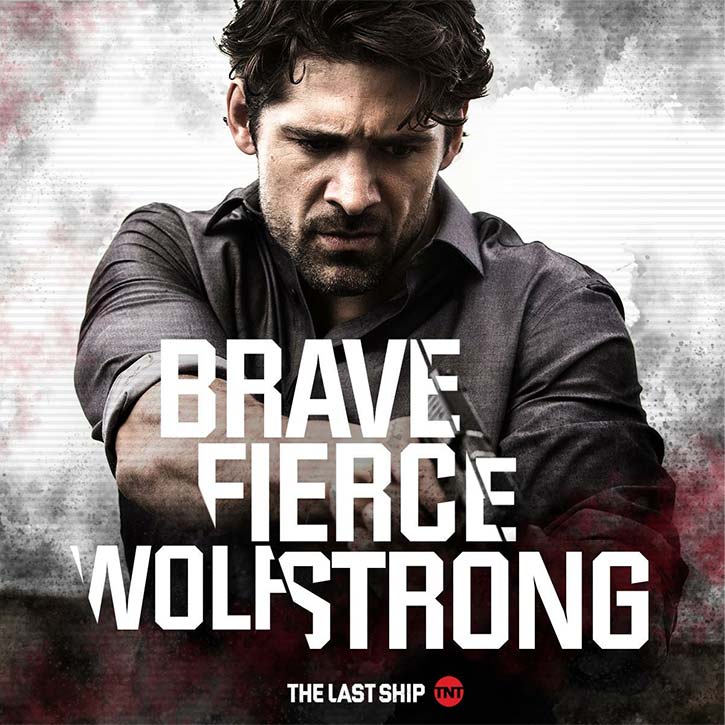
Bren headlines the movie The Last Ship

